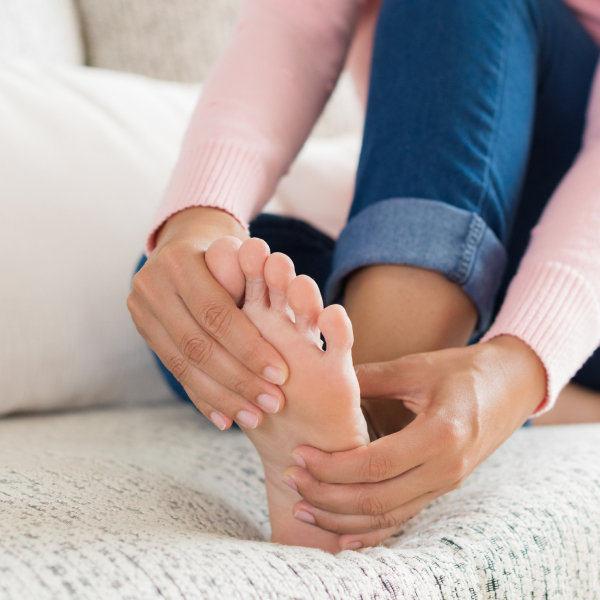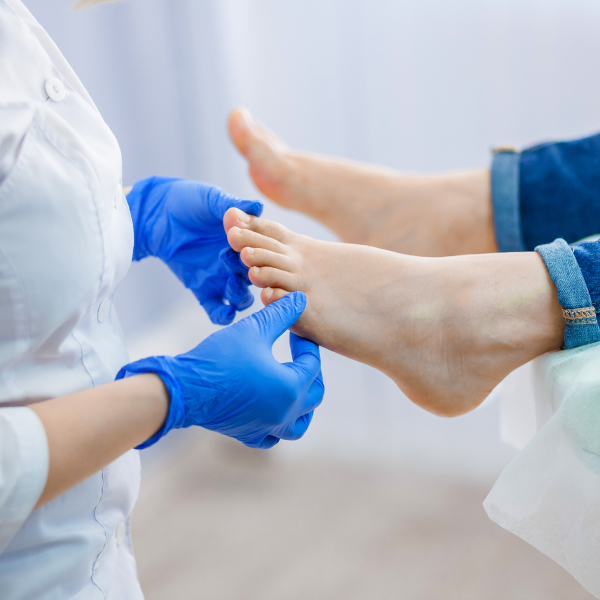Athlete’s foot is a frustrating and unsightly fungal infection that can quickly spread if left untreated. While over-the-counter remedies seem like a convenient solution, the wrong approach could be exacerbating the problem. At Clinique Podiatrique Duvernay, we understand the challenges of dealing with this persistent condition, and we’ll delve into the causes of athlete’s foot, its telltale symptoms, and the most effective treatment options – because ignoring this stubborn infection is never the answer
Why is an athlete’s foot so persistent?
Athlete’s foot, also known as tinea pedis, is a fungal infection that thrives in warm, moist environments like sweaty socks and shoes. The culprit? Dermatophytes, a type of fungus that feasts on keratin, a protein found in the outer layer of the skin. Despite treatment efforts, athlete’s foot can be remarkably persistent and difficult to eliminate due to several key factors:
Recurrent exposure
Even after initial treatment, it’s alarmingly easy to become re-infected with the fungus that causes athlete’s foot. Public areas like locker rooms, swimming pools, and even shared showers can harbor the fungus, leading to recurrent infections if proper precautions aren’t taken. Simply walking barefoot in these environments can expose your feet to the fungus, undoing the progress made by previous treatments.
Resistance to treatment
Over time, some strains of the fungus that cause athlete’s foot can develop resistance to certain antifungal medications, making the infection more challenging to eliminate completely. This resistance is particularly likely if treatments are not followed correctly or if the infection is left untreated for an extended period, allowing the fungus to adapt and thrive.
Untreated nail infections
In some cases, the athlete’s foot fungus can spread to the toenails, causing a fungal nail infection (onychomycosis). If left untreated, this nail infection can serve as a reservoir for the fungus, continually reintroducing it to the skin and making it increasingly difficult to achieve a lasting cure for this problem. To effectively treat and prevent the persistence of an athlete’s foot, it’s crucial to address not only the fungal infection itself but also the underlying conditions that contribute to its growth and recurrence.
What can you do to identify early?

Catching an athlete’s foot early is crucial for effective treatment and preventing its persistent spread. Be on the lookout for the following signs and symptoms:
- Redness, scaling, or cracking of the skin, especially between the toes – early indicators of a fungal infection.
- Itching or burning sensations between the toes or on the soles of the feet – often one of the first symptoms.
- Blisters or ulcers forming on the feet, particularly between the toes – a sign of progression.
- Discoloration, thickening, or crumbling of the toenails – indicating the infection has spread to the nails (onychomycosis).
Pay extra attention to your feet after activities that create warm, moist environments, such as sweating during exercise or walking barefoot in public areas like pools or locker rooms. These conditions are ideal for the fungus that causes an athlete’s foot to thrive.
Now that you know what to look for, what’s the next step?

Now that you’re aware of what to look for and can recognize the signs of a persistent, spreading fungal infection, it’s important to take action immediately to prevent further spread. Rather than risking recurrent exposure to the fungus or the development of more serious infections like a nail infection that spreads, don’t hesitate to seek professional help and begin treatment right away.
At Clinique Podiatrique Duvernay offers various treatment options, including proper removal of the hardened, calloused layer that has formed, as well as offloading of friction pressure and permanent elimination of the persistent infection. Don’t miss the opportunity to seek professional help and stop the spread of infection – book an appointment and seek treatment today. Respond to that first warning sign to prevent further spread.

